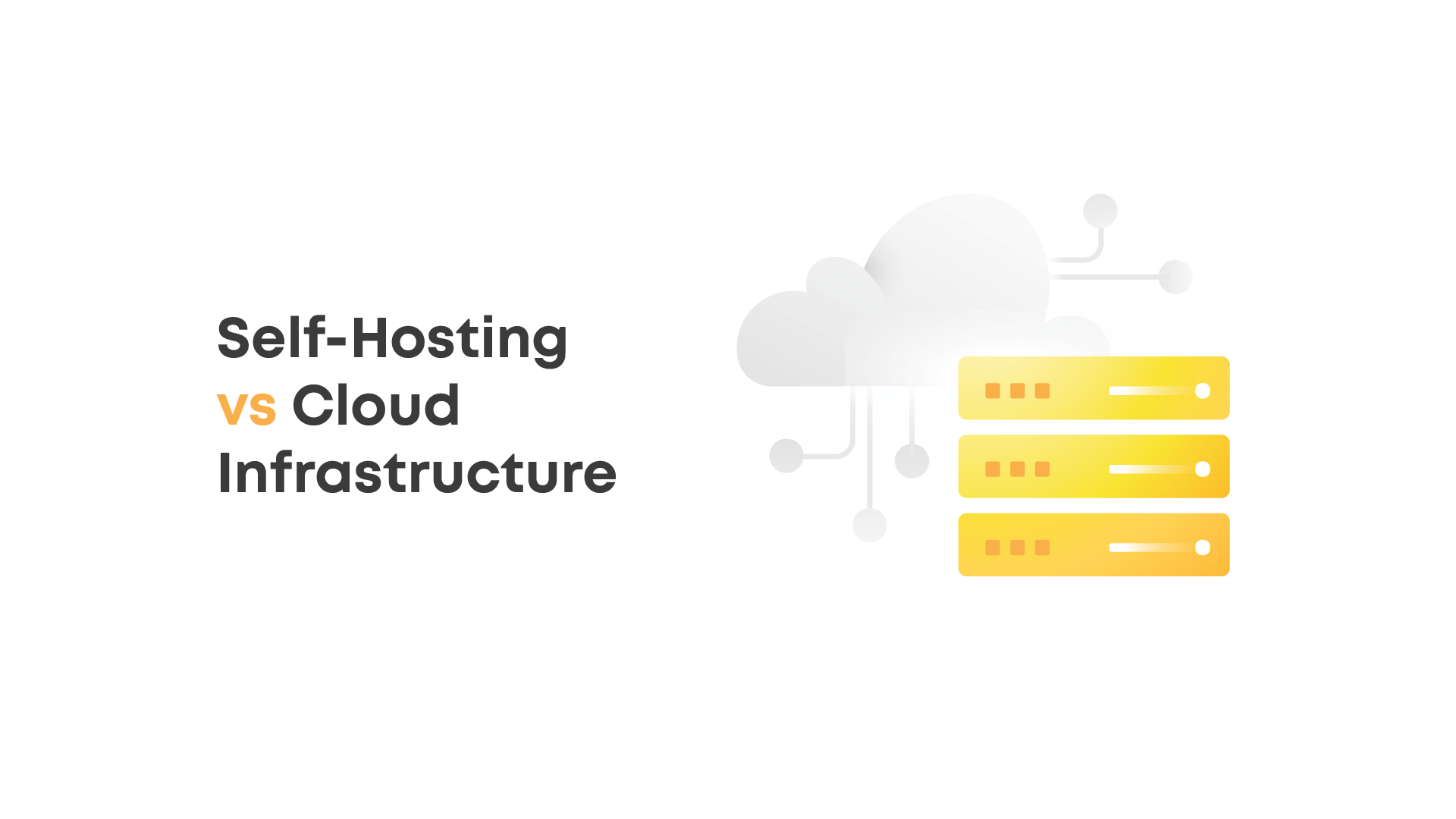There’s one critical question you must ask yourself before you embark on the product development journey — should you self-host or consider cloud infrastructure?
While both options have their advantages and disadvantages, deciding which one is right for your business can be a bit overwhelming. No wonder there is a split between on-site and cloud-hosted servers at organizations. However, you may find that one solution is fitter for your business than another. In particular, you may lean toward cloud infrastructure because of the variety of benefits it offers (but more on this later).
At ORIL, we’ve helped dozens of companies worldwide establish an online presence with custom solutions. As a part of the way, we helped decision-makers find an optimal infrastructure option considering their needs and budget.
In this article, we’ll take a closer look at the pros and cons of self-hosting and cloud infrastructure, and explore which option might be best for your business.
Discovering the Concepts of Self-Hosting and Cloud Infrastructure
Before we discuss the pros and cons of these infrastructure options, it’s important to break these concepts down. So let’s get into this.
What Is Self-Hosting?
Self-hosting is the practice of running and maintaining a digital product on a server that is owned and operated by your company. In other words, you physically host a website or application on a server that is located in your own data center or in a third-party data center that is owned or leased by your business.
Though, there is a misconception that self-hosted infrastructure is outdated and not popular. But we are of a different opinion, just like tech giants such as Dropbox, Netflix, GitLab, Shopify, and Mozilla that use it for running their products. If you need full control over what is going on with your data and hardware, there is no better option than self-hosting.
What is Cloud Infrastructure?
Cloud infrastructure, also known as cloud hosting, is the practice of hosting an application on a third-party server. So, instead of hosting software on a physical server owned by the business, you entrust it to a remote data center owned and managed by the cloud infrastructure provider.
With cloud infrastructure, you are essentially renting server space from a third-party provider instead of owning and maintaining your own server.
Let’s Talk Pros and Cons of Cloud- and Self-Hosting
If there were a one-fit-all infrastructure model, there would never be a dilemma for your business. But things are the way they are, and now you face the daunting task of choosing the right infrastructure for your application. To decide whether you should stick to self-hosting your application or use a third-party hosting provider, you’ve got to weigh the pros and cons of these solutions.
Advantages and Disadvantages of Self-Hosting
If you are considering self-hosting for your project, we have you covered. In this section, we will explore the pros and cons of self-hosting, providing you with the information you need to make an informed decision on whether this option is right for your application.
| Pros of self-hosting | Cons of self-hosting |
|
|
Advantages and Disadvantages of Cloud Infrastructure
These days, cloud infrastructure has become a preferred choice for a great number of businesses. It offers many advantages, such as increased reliability, scalability, and accessibility, but it also has its drawbacks. Thus, it is essential to understand its advantages and challenges fully to make sure this model totally covers your requirements.
| Pros of cloud infrastructure | Cons of cloud infrastructure |
|
|
Which Infrastructure Meets Your Business Needs Better?
Let’s now bring all the pieces together. Below we created a chart that breaks down the features of these infrastructure options.
| Feature | Self-Hosting | Cloud Infrastructure |
| Cost | Upfront costs for hardware and software licenses, ongoing maintenance costs — may be hard to predict due to hardware failure | Pay-as-you-go model, no upfront costs, ongoing subscription fees — always predictable |
| Maintenance | Requires ongoing maintenance and updates, you’re responsible for backups and disaster recovery | Cloud provider handles maintenance and updates, backups and disaster recovery included in service |
| Control | Complete control over hardware and software, can customize to specific needs | Limited control over hardware and software, customizations may be limited |
| Expertise | Requires technical expertise to set up and maintain | Less technical expertise required |
| Accessibility | Accessible only from your location, limited remote access capabilities | Accessible from anywhere with an internet connection, remote access capabilities |
| Scalability | Limited scalability, difficult to upgrade or expand hardware | Easy to scale up or down, resources can be provisioned in minutes |
| Security | Must be managed and maintained by you, potential security risks | Security is managed by the cloud provider, who implements best practices and compliance standards |
| Time to deploy | Longer time to deploy, requires hardware setup and software installation | Quick deployment, resources can be provisioned in minutes |
Overall, self-hosting may be a better option for businesses with specific hardware or software requirements, or those that require complete control over their infrastructure, and have the technical expertise to manage and maintain it. Cloud infrastructure, on the other hand, will be a better fit for companies striving to achieve scalability, reliability, and security, and don’t want to manage the infrastructure themselves.
At ORIL we observed that the majority of startups, around 99.9%, choose to go with cloud infrastructure — and we think that’s a great choice. Especially when you’re starting your business, cloud infrastructure providers can help you overcome many challenges. Instead of worrying about buying and maintaining hardware, you can focus on developing your product, which is crucial in the early stages. Of course, you can always consider self-hosting later on if it makes sense for your business.
Conclusion
In the end, the choice between self-hosting and cloud infrastructure depends on what’s right for your business. Self-hosting can be a great option if you want complete control, but it may come with extra costs and technical challenges.
You can overcome these issues with the cloud infrastructure. It offers scalability, accessibility, and cost savings, ensuring you can easily scale up and down as your business needs change. Over the years of experience, we revealed that cloud hosting is the ultimate solution that should be able to cover the needs of nearly any company — a startup or a well-established organization that wants to transform its environment; a small local business or an international enterprise. That’s why we recommend going with this infrastructure model that will enable bringing a new product to the market faster and with a reduced cost.
If you’re feeling unsure about which infrastructure solution is best for you — that’s where we step in. At ORIL, we’re here to help you navigate this decision with ease. Our team of experts is ready to guide you toward a suitable infrastructure solution that matches your goals and budget. Contact us today and let’s get started!





